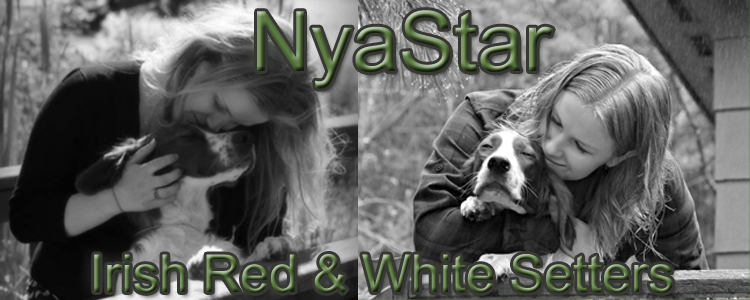IRWS Working Style
(this working style is from Ireland)
�As Irish Red and White Setters were originally bred as partridge and grouse dogs, their style of hunting these birds may be taken as the norm.
Irish Red and White Setters are fast, wide rangers. They use the ground with intelligence and precision, breaking their casts as they check the wind for the faintest scent of game. Should it be unfounded they resume their cast with urgency. The depth between casts should be moderately open depending on the conditions on the day.
In their quest there must be an intensity that gives purpose to the hunt for game. The concentration on the job at hand should be eveident in every stride and movement. The cooperation with the handler is part of that concentration and should not interfere with the quest for game.
In the gallop the head is carried above the line of the back, the line of the muzzle always parallel to the ground. The gallop is fast, flowing, free of obvious effort. The line of the back remains as close to horizontal as possible, due to the harmonious interaction of front and back legs. As the body of the Irish Red and White Setter is close to being square, the galloping dog appears relatively high above the ground.
On finding game Irish Red and White Setters either take a definite set, or draw forward to the set, depending on distance from game and scenting conditions.
Standing or crouched settings are normal attitudes. The set is intense and rigid, full of energy and concentration, the placement of the feet controlling and balancing the tense and immobile body. The head is well up, eyes intense, the tail at or below the level of the bacl line. On a surprise set on finding itself close to game, the Irish Red and White Setter may crouch very low or lie flat on the ground, intense and rigid, with head up and forward.
The attitude in roading must be very intense and concentrated. The head remains well up in the air to maximise the film of scent, muzzle parallel to the ground, the shoulder blades exposed over the line of the back, and th tail carried at or below the level of the back line. Any tendency towards stickiness is a grave fault
The tail is carried in the line of the back, tending downwards and should not be above the back line. When running, roading or setting the tail may be carried rigid or have movement
